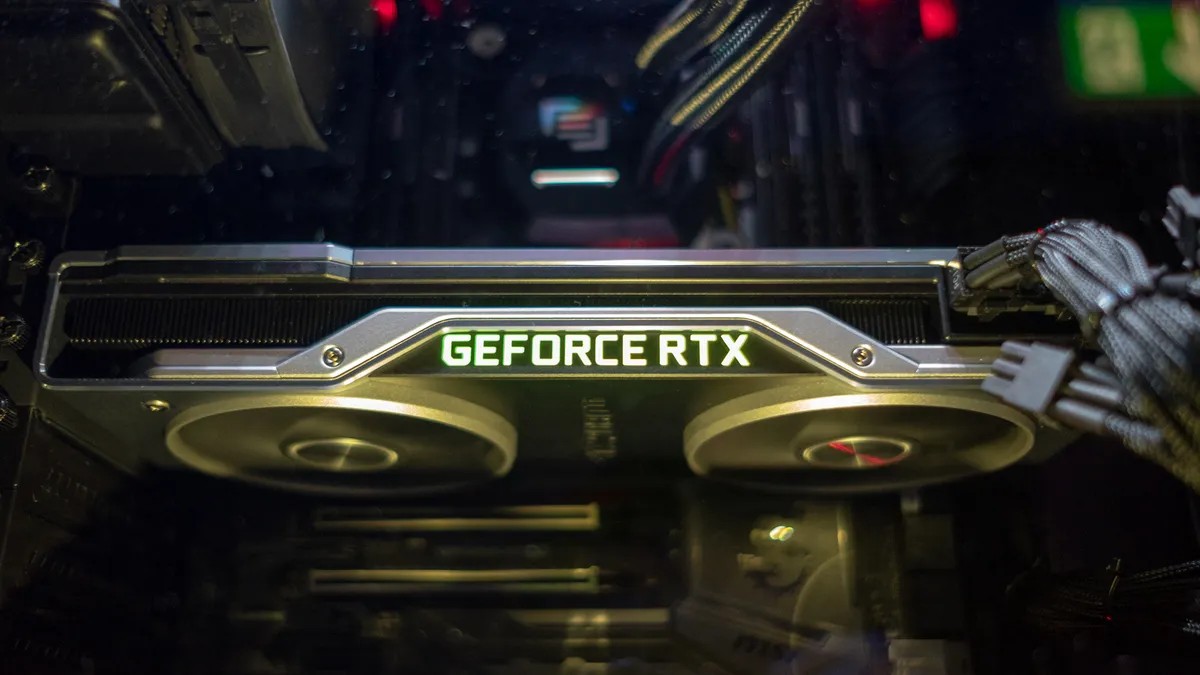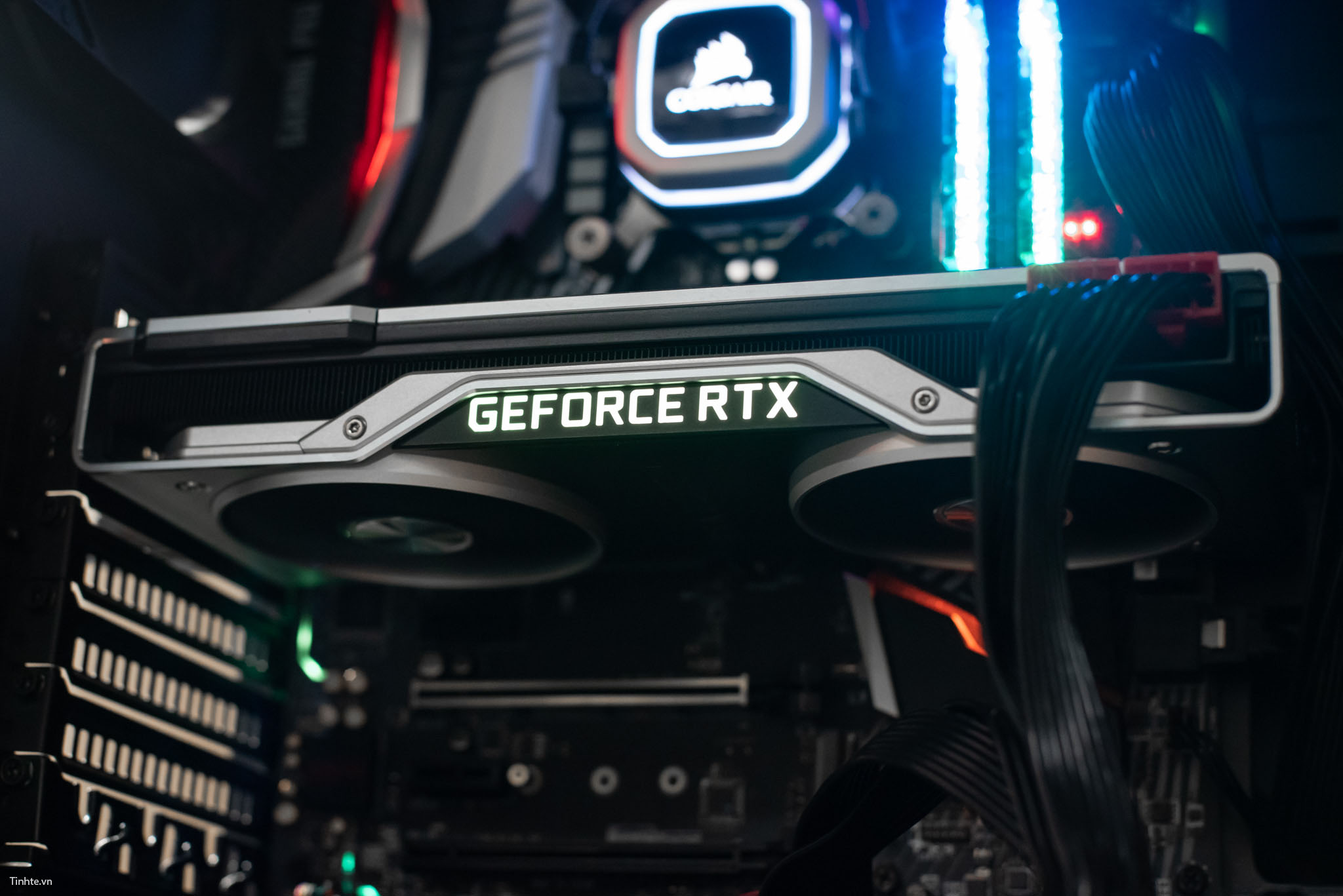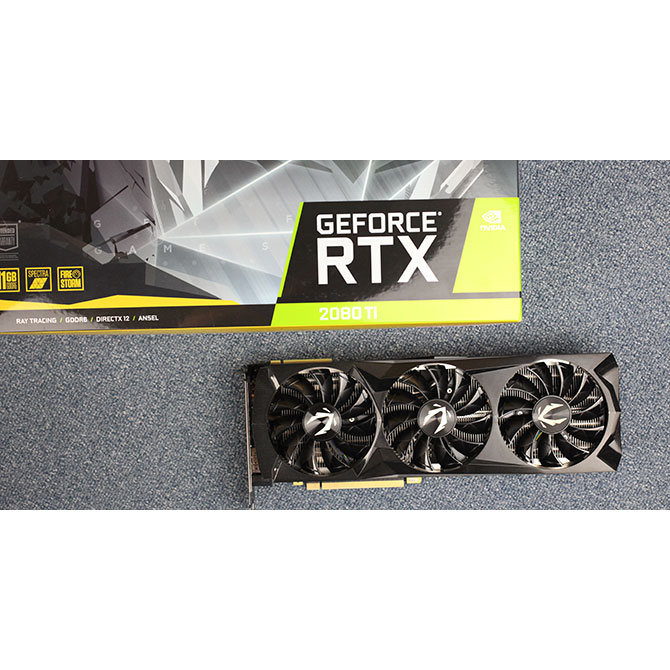Cons
- -Extremely expensive
- -Few initial ray tracing-supported games
The Nvidia GeForce RTX 2080 Ti is poised to be surpassed by the Nvidia GeForce RTX 3070 and 3080, which were introduced during the company’s event on September 1. This is significant, given the RTX 2080 Ti’s long-standing dominance in the market.
The Nvidia GeForce RTX 2080 Ti graphics card continues to be a powerhouse in the realm of gaming. It incorporates remarkable ray tracing technology and AI-enhanced Tensor cores, significantly enhancing any graphics-intensive application. This card can achieve over 60 frames per second in 4K resolution during gaming sessions. Undoubtedly, it represents a substantial advancement over its predecessor, the Nvidia GeForce GTX 1080 Ti. The considerable price tag is easily justifiable for those who have the means to invest in it.
Investing in the Nvidia GeForce RTX 2080 Ti sets a high standard for gaming experiences, making it difficult to revert to lesser options. This is particularly true when it is combined with a top-tier processor and an exceptional gaming monitor, both of which significantly enhance its performance.

Characteristics and attributes.
While the Nvidia GeForce RTX 2080 Ti is priced at nearly double that of the graphics card it replaces, it offers impressive specifications, including 11GB of GDDR6 VRAM, 4,352 CUDA cores, and a boost clock speed of 1,635MHz. This performance is attributed to Nvidia’s inaugural self-applied factory overclock of 90MHz. In contrast, the Nvidia GeForce GTX 1080 Ti features 11GB of the previous generation’s GDDR5X VRAM, 3,584 CUDA cores, and a peak frequency of 1,582MHz.
This graphics processing unit (GPU) incorporates two new types of cores that were absent in its predecessors, specifically RT and Tensor cores. The 68 RT Cores in the RTX 2080 Ti facilitate ray tracing, enabling this graphics card to produce significantly more intricate real-time lighting effects and realistic shadows compared to the 1080 Ti.
Concurrently, 544 Tensor Cores integrate artificial intelligence (AI) into the equation, which Nvidia aims to leverage for enhanced anti-aliasing efficiency. Nvidia asserts that the Turing architecture processes anti-aliasing at a rate eight times faster than Pascal through machine learning techniques. Furthermore, Tensor Cores facilitate a novel technology known as Deep Learning Super Sampling, which enables an increase in resolution while simultaneously implementing anti-aliasing.
In the course of our testing, we conducted the Epic Infiltrator benchmark, which compares a variant of the experience utilizing temporal anti-aliasing with DLSS. The former achieved a frame rate ranging from a minimum of 34 frames per second to a maximum of 117 fps, whereas the latter produced frame rates between 35 and 89 fps.
The new GPU features an unexpectedly large number of additional ports. Nvidia has transitioned from its long-standing high-bandwidth connector for multi-card configurations to NV Link, which offers a remarkable 50 times the transfer bandwidth compared to earlier technologies. Specifically, the RTX 2080 Ti is equipped with two of these connectors, enabling a total bandwidth of up to 100GB, suitable for driving multiple 8K monitors in a surround setup.
At the rear, there is a recently incorporated USB-C video output port, which has gained popularity in modern monitors. This USB-C 3.1 Gen 2 port not only supports UHD video but also delivers 27 watts of power, allowing for the possibility of powering future virtual reality headsets with a single cable connection.

Design and thermal management.
The Nvidia RTX 2080 Ti, along with the entire Turing-based RTX series, introduces the inaugural dual fan cooling system featured on an Nvidia Founders Edition, also known as a reference card.
Generally, first-party graphics cards are equipped with a blower-style cooler that draws in cool air via its fan, directing heat out through the rear of the card. In contrast, a dual-fan system utilizes cool air to effectively distribute it across an exposed heatsink, allowing heat to be expelled in multiple directions.
Blower-style coolers are effective in isolating heat from other components; however, their cooling capacity has traditionally been limited, as a single fan can only circulate a finite amount of air. In contrast, dual and multi-fan systems are capable of moving significantly larger volumes of air, but they tend to retain more heat within the PC case. The ongoing discussion within the computer industry regarding which cooling solution is superior remains unresolved.
In addition to the newly introduced fans, the Nvidia RTX 2080 Ti features a full-length vapor chamber that encompasses the entire printed circuit board (PCB) of the card. Coupled with the dual-fan configuration, Nvidia assures that this system is designed to provide exceptionally cool and silent operation.
In our testing, we observed that the cooling system of the Founders Edition performed as expected, effectively maintaining low temperatures and minimal noise levels for the GPUs. Nevertheless, it appears that the new cooling solutions were more essential than Nvidia suggested, as both the RTX 2080 Ti and RTX 2080 exhibited slightly higher temperatures compared to their earlier models, even when idle.
Although neither graphics card exceeded a temperature of 80 degrees Celsius, it is reasonable to assume that they would have likely experienced overheating issues if they had been fitted with a conventional blower-style cooler.
Effectiveness
Following a comprehensive benchmarking of the card, we can assert with confidence that the Nvidia RTX 2080 Ti stands as the most powerful consumer graphics card available globally.
The new flagship GeForce card not only surpasses the performance of the GeForce GTX 1080 Ti but also significantly outperforms the Nvidia Titan Xp, and this advantage is not merely marginal. In nearly all synthetic benchmarks, it maintains a lead of 2,000 points and consistently achieves at least 10 additional frames per second (fps) in our gaming assessments.
Nvidia had already established a significant lead over AMD, and with the introduction of the RTX 2080 Ti, it appears the company has transcended to an entirely new level of performance.The RTX 2080 is the sole graphics card that approaches the capabilities of the Nvidia RTX 2080 Ti, consistently trailing behind it in various benchmarks. Nevertheless, the RTX 2080 does not fully achieve the 60 fps threshold for 4K gaming.
Beyond the benchmarks, we were able to experience Destiny 2 at an impressive frame rate of 70 to 100 fps while the game operated at 4K HDR on Ultra settings. In contrast, the newly launched Shadow of the Tomb Raider performed at a respectable 50 to 55 fps under comparable 4K Ultra configurations.
Unfortunately, apart from ray tracing demonstrations, there were no games available that supported this feature during our review period. Consequently, we were unable to assess the impact of Nvidia RTX on performance. However, it is worth noting that Shadow of the Tomb Raider and other titles with Nvidia RTX enabled appear visually impressive when ray tracing is activated.
During Nvidia’s GeForce Gaming Celebration at Gamescom 2018, the capabilities of Nvidia RTX were showcased, presenting a significantly more realistic environment characterized by varying intensities throughout a stone ruin nestled within a rainforest. We were captivated by the walls, observing how they shimmered as light was both reflected and refracted across their surfaces.
Regarding frame rate, an initial version of Shadow of the Tomb Raider achieved a largely stable performance of 40 to 50 frames per second, which is commendable considering the game operates on a single GPU, alongside the implementation of various new ray tracing techniques.
We additionally engaged in gameplay of Battlefield V and Metro: Exodus with Nvidia RTX enabled, achieving performance levels exceeding 100 fps at 4K resolution and Ultra settings. Our Battlefield V gameplay featuring Nvidia RTX is available above (shared with PC Gamer), captured using the Nvidia GeForce Experience application.
It is noteworthy that the Nvidia RTX 2080 Ti achieves this level of performance while consuming less power than both the Titan XP and the 1080 Ti, which it surpasses. However, it is important to mention that this graphics card requires twice the minimum power and tends to heat up rapidly, so ensure that your PC is adequately equipped to dissipate the heat before proceeding with its installation.

Conclusive determination.
For those who are PC gamers anticipating a more robust graphics card or who are genuinely aligned with Nvidia’s vision of a ray-traced future, the Nvidia RTX 2080 Ti stands as the premier option in the graphics card market and represents a wise investment.
Upon witnessing the lifelike illumination generated by ray tracing, we find it difficult to revert to the conventional rasterization methods that result in unclear puddles, where we anticipate remarkable reflections. Furthermore, an increasing number of games are adopting this advanced technology, with Cyberpunk 2077 and Call of Duty: Modern Warfare being among the most recent titles to embrace it.
Tensor Cores appear to offer significant long-term benefits by minimizing the overhead associated with anti-aliasing and super sampling.
The exorbitant cost of the Nvidia RTX 2080 Ti is likely to deter many potential buyers. The RTX 2080, priced a presents a nearly comparable alternative, offering impressive performance that closely rivals Nvidia’s premier model.
If you were considering investing a similar amount in the equally priced Titan Xp, it would be advisable to proceed directly to the Nvidia RTX 2080 Ti.




